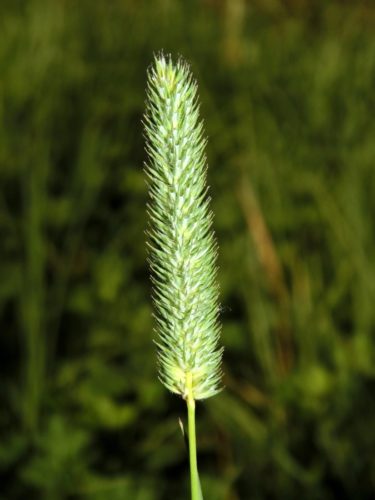Loose bush late-ripening plant of spring-winter type of development. Hardy, demanding on moisture, poorly tolerates drought. Used to create cultivated hayfields and pastures. It is well eaten by livestock both in hay and during grazing. Recommended as a late-ripening link in the raw material conveyor system for the preparation of canned feed. Caryopsis, scarious, round-oval, light gray, brownish. The mass of 1000 caryopses is 0.4-0.8 g. Propagated by seeds and shoots of tillering. Refers to plants of the spring-winter type of development. Bears fruit normally from the 2nd year of life. In spring, it grows later than meadow foxtail, canary grass and awnless fire. Heading usually occurs in 5-7 weeks, flowering in 8-10 weeks. and maturation of seeds. after 12-15 weeks. (up to 18 weeks) after spring regrowth. The growing season is 85-130 days. Cross-wind-pollinated plant with a clear protogyny. Seeding rate of timothy (per 1 hectare): with wide-row sowing 4 – 6 kg, and with continuous row sowing 8 – 10 kg. In a mixture with clover, 4 – 6 kg hectares are sown. The seeding depth is 1 – 2 cm. The field is rolled up before sowing. The best times for harvesting a mixture of clover and timothy for hay are the budding phases of the clover and throwing the timothy panicles. The seeds are obtained from the herbage of the second year of use. Access region: Central, Middle Volga.
Access region: North, North-West, Central, Volgo-Vyatka. Originator (s): State Scientific Institution of the Leningrad Research Institute of Agriculture “Belogorka” of the Russian Agricultural Academy. Productivity: Productivity of green mass 30-45 t / ha, hay 7-9 t / ha, seeds 300-500 kg / ha Vegetation period: Growth in spring and after cutting is good. Winter-resistant. Drought resistance: Demanding on moisture. Disease resistance: comparatively resistant to fungal diseases Main advantages of the variety: The variety is of the hay-pasture type. When used for haying, it develops well in double and triple grass mixtures with awnless rump and meadow clover; remains in the herbage for up to 7 years. For pasture use, it is advisable to sow in a mixture with meadow bluegrass, creeping clover and hybrid; it is grazed during the growing season 2-3 times, it remains with this mode of use on pastures for 3-4 years. Grows well on clay, loamy, sandy soils, drained peat bogs.

| with delivery: | from 500 kg |
| from warehouse: | from 100 kg |
Cashless payments